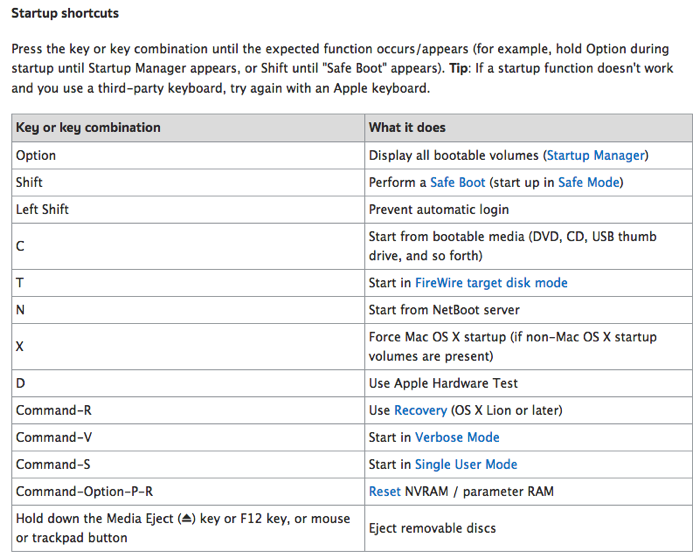
- Full list mac startup commands how to#
- Full list mac startup commands Pc#
- Full list mac startup commands mac#
Full list mac startup commands mac#
If your Mac won’t boot up as it detects the startup disk is missing, try using Recovery Mode by following the steps below. Sign in using your details and see if the internal hard disk is visible in Safe Mode. Release the Shift key when the login screen is visible.Press the Power button, then immediately press and hold the Shift key on your keyboard.This method might allow you to do extra troubleshooting if your computer doesn’t boot up normally. You can try booting your Mac in Safe Mode in order to fix the external hard drive disk utility not showing up on Mac. If not, move to the next external hard drive not showing solution. That should fix external hard drive not showing up on mac issue. Then go to Sidebar and check Hard disks and External disks there as well.Make sure you tick the boxes next to External disks and Hard disks.Follow Preferences → General → Show these items on the desktop.Go to Finder and click on the Finder button in the menu bar at the top of the screen.Your Mac settings might not be set to display external drives on the desktop. But you could still check your preferences - just in case. If this is not your first time using an external hard drive disk utility and experiencing such a problem, it is not likely to be an issue for you.
Full list mac startup commands Pc#
You can try using another Mac or Windows PC and see if it only works on another Mac or PC. If this doesn't work, try Other Devices for the external hard drive's Power Supply because the problem might be in your Mac’s hardware. So, check that your USB drive cable is delivering enough power to the hard drive and, if need be, swap to a more powerful connector or to a different USB port on your Mac. But if your external hard disk needs a stronger power output, it may work slower than expected or even not connect at all. Normally, a device requires up to 500 mA, which can be provided by a standard USB 1.0 or 2.0. Equally, different types and brands of cables provide more or less energy. Some hard drives require more power supply than others.
Full list mac startup commands how to#
How to access external hard drive not recognized on a Macīelow are the methods to address the internal hard drive not showing up on Mac OS.

What you might not know: There can be many reasons for an external hard drive not reading a Mac - poor connection, faulty cable, dirty USB, or, in the worst-case scenario, corrupt hard drive data. But sometimes you meet the "external hard drive not showing us" issue. What you know: When you plug in an external drive disk utility into your Mac, you expect it to pop up and be showing up on mac in Locations in Finder - next to your remote disk and the computer itself.


 0 kommentar(er)
0 kommentar(er)
